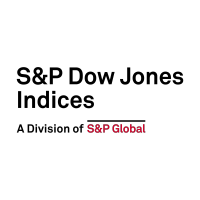Tag Archives: risk control
Using the News to Select a More Stable Path to the S&P 500
Meet the S&P 500 RavenPack AI Index, a multi-asset index that applies a news analytics algorithm powered by RavenPack to select S&P 500 sectors with the strongest news sentiment for use in its sector rotation process. The index combines U.S. equities and fixed income, complemented by a daily risk control mechanism that seeks to maintain…
- Categories Multi-Asset
- Other Tags
- Categories
- Multi-Asset
- Other Tags
Meet the S&P 500 Dynamic Intraday TCA Index
Combining a trend-following mechanism with the ability to rebalance up to 13 times during the trading day, this innovative multi-asset index seeks to provide a more stable volatility experience by leveraging the next generation of risk control technology.
- Categories Multi-Asset
- Other Tags
The Gold Standard of Indices Meet’s Today’s Technology
Meet the S&P 500 FC Index, an innovative index designed to adjust allocations based on intraday volatility signals as it seeks to increase stability, limit exposure to drawdowns, while optimizing exposure to the S&P 500 via BofA’s Fast Convergence technology.
- Categories Multi-Asset
- Other Tags
Innovating for Insurance: Charting a “Smarter” Path to the S&P 500
How can an index adjust to prevailing market conditions by design? Meet the S&P 500 IQ Index, a dynamic risk control index that uses intraday technology to rapidly respond to changing markets, increasing S&P 500 exposure when markets are stable and leaning into cash during times of volatility.
- Categories Multi-Asset
- Other Tags
- Categories
- Multi-Asset
- Other Tags
Innovating for Insurance: S&P 500 Duo Swift Index
How is intraday volatility rebalancing helping new multi-asset indices rapidly respond to changing markets? Look inside the S&P 500 Duo Swift Index, a diverse, multi-asset, risk-controlled index that is dynamic by design.
- Categories Multi-Asset
- Other Tags
Defense and Volatility
As the equity market has waned and waxed in 2022, investor interest has naturally turned toward ways of mitigating portfolio losses. Some factor indices can serve this goal, but investors searching for a defensive strategy need to define their search carefully. It’s natural to think that defensive strategies will be less volatile than the market…
Defense in the Balance
Balanced portfolios traditionally (and definitionally) hold a mix of stocks and bonds. Stocks have been the better-performing asset over time, but with a level of volatility that many investors find unacceptably high. Although bonds are usually included in a balanced portfolio more as a volatility dampener than a return enhancer, during the bull market in…
Time Sensitivity and Volatility Management
We all know that in the long run, the U.S. stock market has performed very well, compounding at well over 10% per year for nearly a century. We also know that sometimes the market performs very poorly, as the S&P 500®’s 20% decline in the first half of 2022 reminds us. For an investor who…
A Risk Control Approach to Cryptocurrencies: A Tool for a Crypto Winter
Earlier this year, we reported on the volatility of Bitcoin and cryptocurrencies overall. In February 2022, the market was slightly down from its all-time high in November 2021. S&P Dow Jones Indices had just launched the new S&P Bitcoin and Ethereum Dynamically Rebalancing Risk Control 40% Indices (CET Close), and we saw that risk-adjusted performance…
- Categories Thematics
- Other Tags
Volatility, Cryptocurrency, and a Risk Control Approach
We’ve all heard it often—that volatility is a “feature” of Bitcoin and, by extension, the cryptocurrency market in general. While not all of us would agree with calling it a feature, most would agree that there is a significant amount of volatility in the cryptocurrency market. And, depending on your role—trader, asset manager, advisor, observer—you…
- Categories Thematics
- Other Tags











































